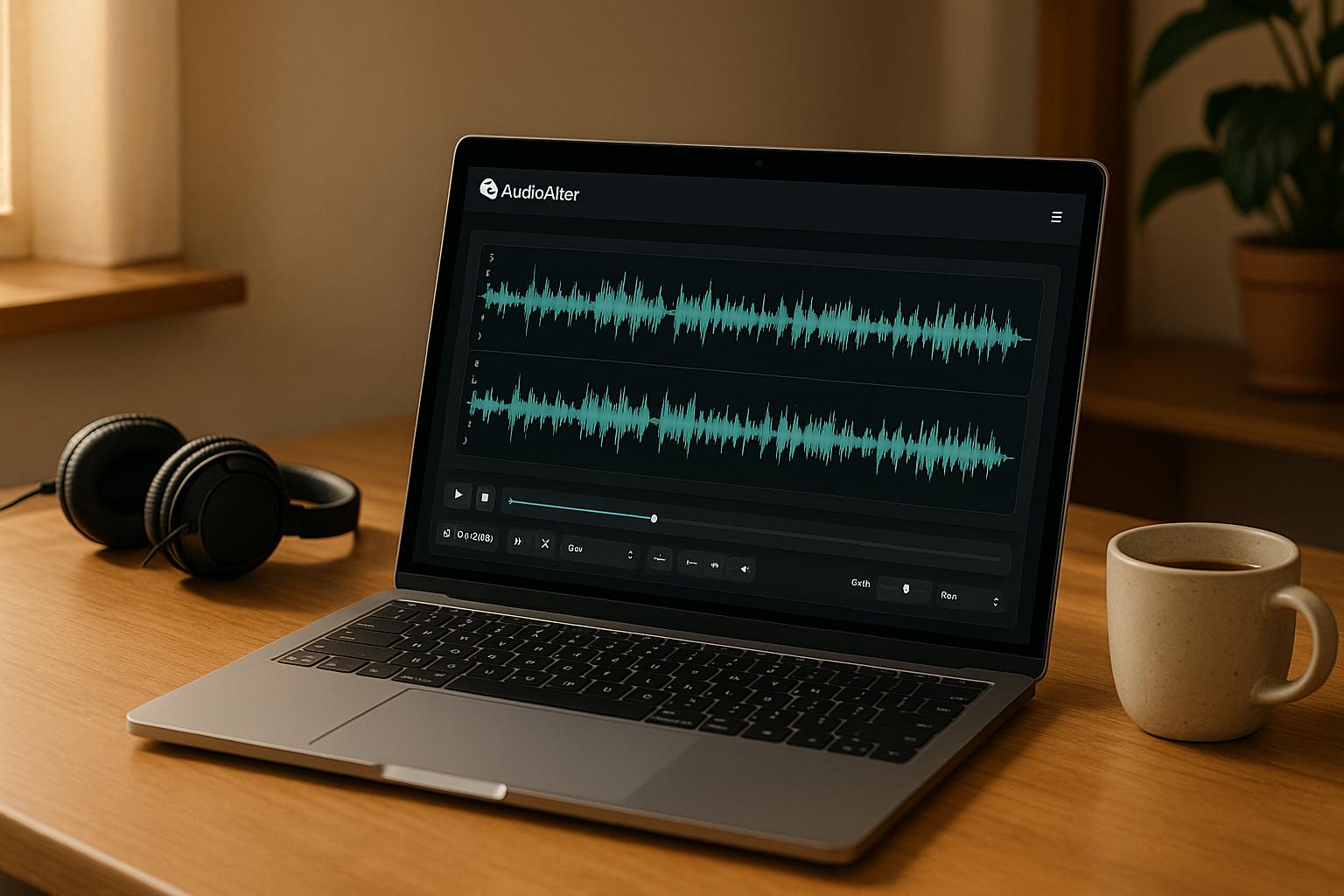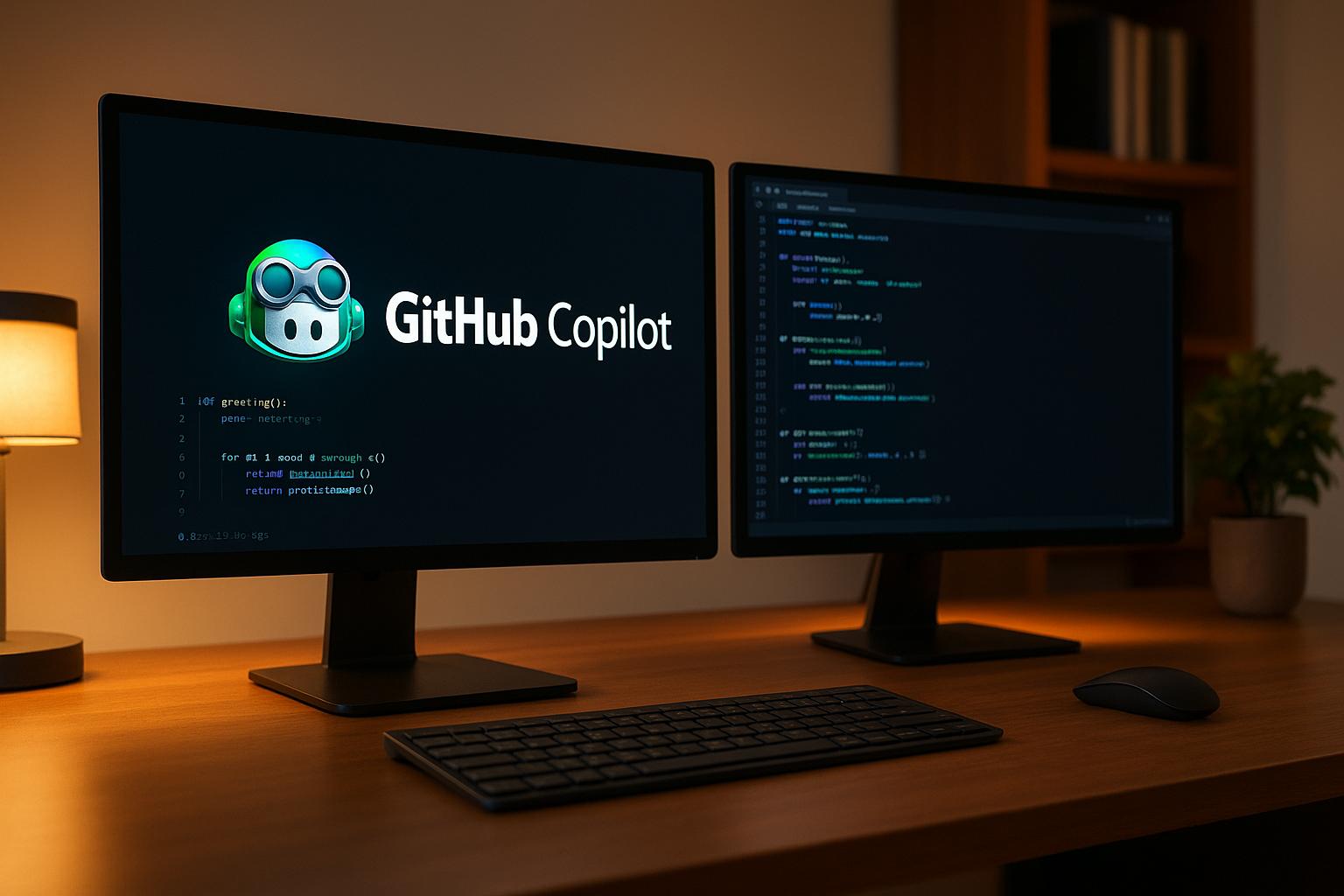AI design tools make graphic design faster, cheaper, and easier for everyone - no experience required. Whether you need a logo, social media post, or marketing materials, these tools handle repetitive tasks like resizing and background removal in seconds. Here’s how they help:
- Save Time: Automate complex tasks like resizing designs for multiple platforms.
- Save Money: Create professional-quality visuals without hiring a designer.
- Easy to Use: User-friendly interfaces and templates make designing simple for beginners.
- Top Tools: Canva, Adobe Firefly, and Looka are among the best for creating logos, social media graphics, and brand kits.
Quick Comparison:
| Tool | Best For | Key Features | Cost (Monthly) |
|---|---|---|---|
| Canva | Social Media, Marketing | Drag-and-drop, templates, Magic Switch | Free to $12.99 |
| Adobe Firefly | Custom Visuals | Text-to-image, safe for commercial use | Included in Adobe plans |
| Looka | Branding, Logos | Logo design, brand kits | Free to $49 |
AI tools like these simplify design for non-professionals, enabling anyone to produce polished visuals quickly and affordably.
I Tried 117 AI Design Tools...Top Picks Revealed! 💥
Best AI Design Tools for Beginners
Starting your graphic design journey has never been easier, thanks to AI-driven tools that handle the technical heavy lifting. These platforms make professional-quality visuals accessible to everyone, even those with no prior experience.
1. Canva: Simplified Design for Everyone
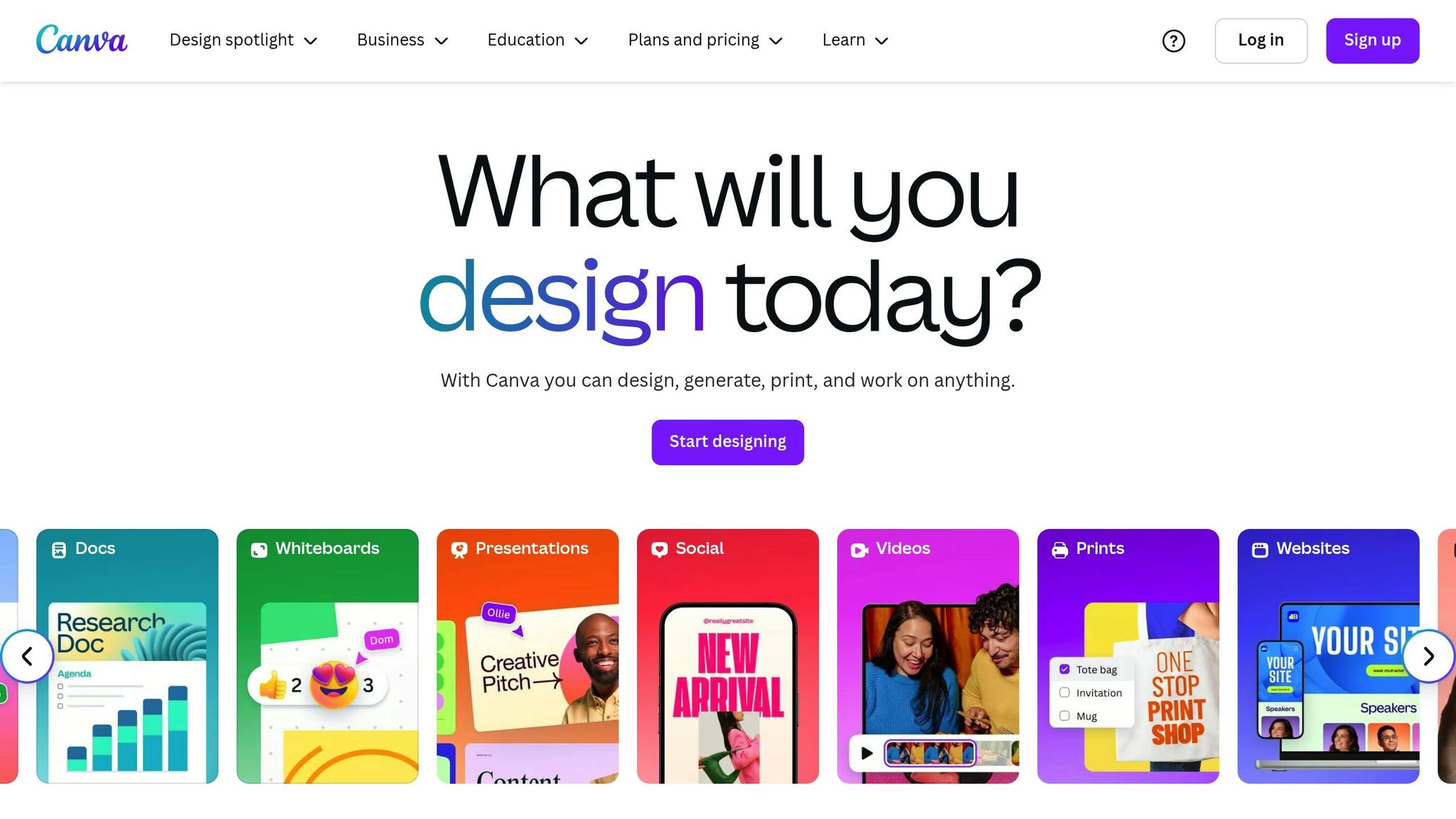
Canva is a favorite among beginners, offering an easy-to-use drag-and-drop interface. Its extensive library includes photos, GIFs, stock videos, and even background music, making it a one-stop shop for creative projects. The platform also provides a free Essentials course that takes just an hour to complete - helping over 73,700 users grasp the fundamentals of design. Impressively, more than 500,000 nonprofits rely on Canva for their creative needs.
"Canva saves so much time across the company, because we're able to free up our creative teams." - Kyle Legg, Head of Brand Social Media & Creative
2. Adobe Firefly: Turn Words Into Images
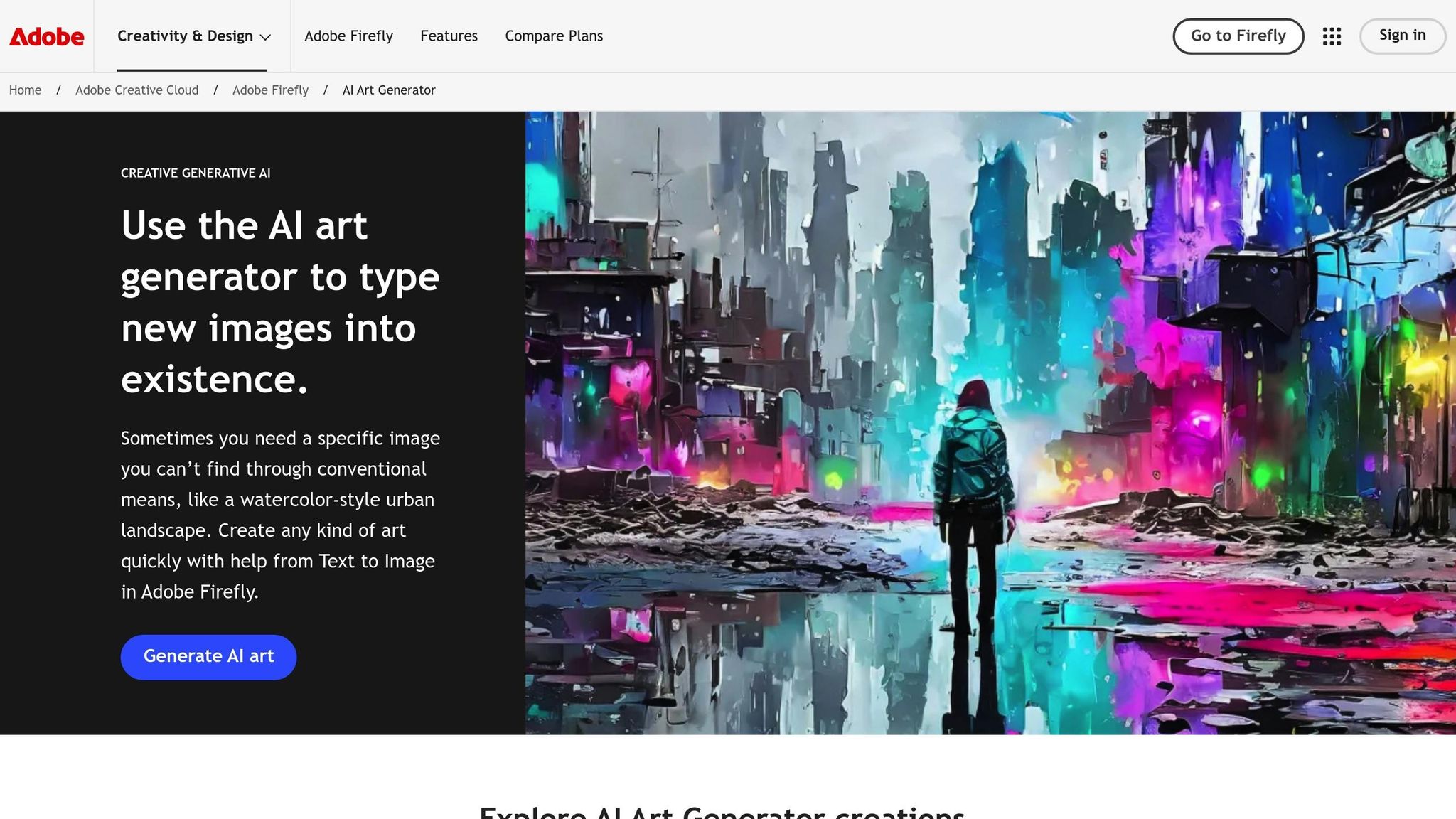
Adobe Firefly takes creativity to the next level by transforming text descriptions into polished visuals. Since it’s trained on Adobe Stock and public domain content, the generated images are safe for commercial use. This tool is ideal for creating:
- Social media posts
- Marketing banners
- Video snippets for platforms like Reels and TikTok
For best results, start with short prompts (4–5 words) and refine them as needed.
3. Looka: Build Your Brand Identity
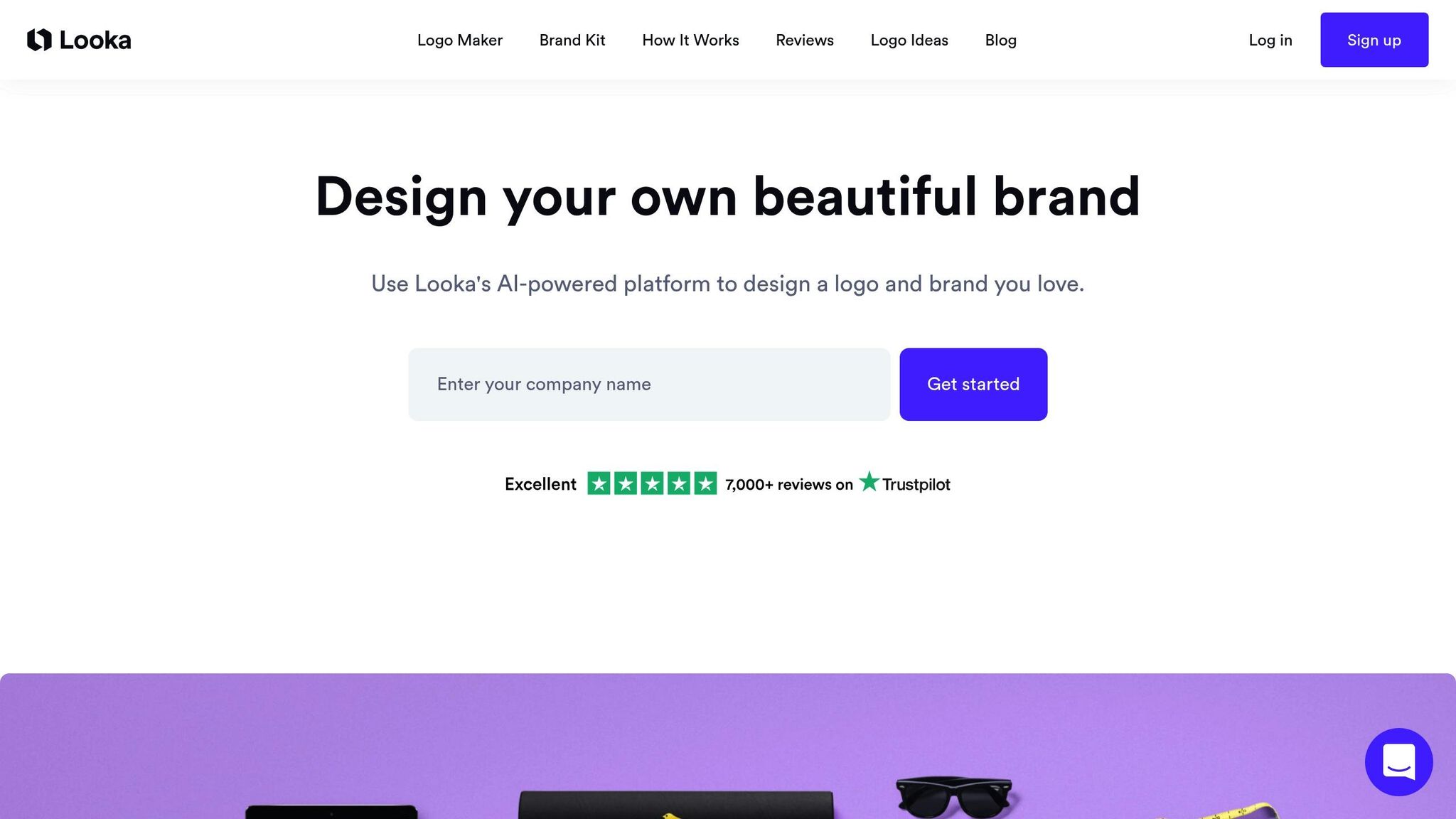
Looka focuses on helping users develop a cohesive brand identity. From designing logos to creating complete brand kits, its AI tools are tailored for entrepreneurs and small businesses.
Recent trends show that 82% of marketers and creatives now use generative AI for crafting unique visuals. Moreover, 80% of creative leaders are redirecting the time they save with automation toward more strategic work.
"Design is a voice without words. Making a statement can be as easy as applying a bold color and using it consistently across your brand, or even working with a basic shape such as a circle." - Emma Terrens, Vim & Zest's graphic designer
With 75% of marketers seeing AI as a key part of their creative toolkit, these tools are a game-changer for producing professional designs with ease.
How AI Makes Design Work Easier
AI has completely reshaped the way beginners approach graphic design by simplifying complex tasks and providing smart tools. Features like ready-made templates, tailored suggestions, and automatic resizing for different platforms make designing faster and more accessible.
1. Ready-Made Templates
AI-powered tools now go beyond basic layouts, offering templates that feel custom-made. For example, Canva's Magic Design can instantly create personalized templates based on a simple text input or photo. It ensures your brand's colors, fonts, and logos are seamlessly integrated into the design.
"Say goodbye to the blank canvas and pre-made templates that just don't fit what you need. With Magic Design, jumpstart any design with just a text query or photo. We'll auto-generate relevant and inspiring templates that fit your description." - Canva
2. AI Design Recommendations
AI doesn’t just stop at templates - it personalizes the entire design process. By analyzing your project, it provides suggestions that match professional standards while still reflecting your individual style. Whether it’s recommending layouts, color combinations, or typography tweaks, these tools make designing smoother.
To get the most out of these features, try the following:
- Use specific prompts for better accuracy.
- Start with designs that already match your preferred color palette.
- Consistently incorporate your brand’s logo and elements for a cohesive look.
3. Multi-Platform Design Sizing
In March 2025, Canva introduced "Magic Switch", a feature that changed the game for adapting designs across platforms. This tool automatically adjusts layouts for different formats, ensuring proportions, readability, and alignment stay intact.
Gone are the days of manually tweaking designs for each platform. With this automation, you can focus on creativity while the tedious adjustments are handled for you. These AI-driven features make professional-quality design achievable for everyone, no matter their skill level.
sbb-itb-212c9ea
Why Non-Designers Should Use AI Tools
1. Money Savings
AI design tools make it possible to achieve professional-quality results without the steep costs of hiring a designer. These tools provide a budget-friendly alternative, delivering impressive outcomes at a fraction of the cost. For instance, Leonardo.Ai, which has a user base of over 425,000 designers, has already facilitated the creation of more than 1 billion images, headers, and designs.
2. Simple to Learn and Use
AI design tools are crafted with non-designers in mind. Their intuitive interfaces and smart features make them easy to navigate, even for beginners. These tools offer personalized suggestions for templates, colors, and fonts, ensuring that anyone can create polished designs with minimal effort.
"This tool isn't for professional designers - they've got their own amazing skills. It's for founders, marketers, and creators who need something that looks good and need it now."
- Anima Creative Ltd
Some standout features include:
- Smart Templates: Automatically adjust to your project, offering relevant design elements.
- Color Assistance: Suggest harmonious color palettes tailored to your design's theme.
- Real-Time Help: Provide instant tips and tool recommendations during the design process.
These features make it possible for non-designers to produce work that rivals professional standards.
3. Professional-Level Results
AI design tools not only save time and money but also produce results that look polished and professional. They’re particularly valuable for businesses and educators. For example, educators can use these tools to create engaging, customized materials that resonate with their audience.
"Alayna AI has been a game-changer for my teaching, saving me valuable time by streamlining lesson preparation. It allows me to create tailor-made presentations effortlessly, ensuring they align perfectly with my students' needs. The AI's precise image generation adds a dynamic, engaging visual touch to lessons."
- Claudia Fisanotti, EFL Teacher, Regional Digital Curriculum Coordinator and Integrator
The numbers speak for themselves: users have created millions of videos and over a billion images, headers, and designs. This demonstrates the ability of these tools to produce high-quality content on a massive scale.
For optimal results, consider these tips:
- Define your brand identity clearly before starting any design project.
- Use detailed and descriptive text prompts to guide the AI in generating accurate designs.
- Experiment with different art styles to find the one that best suits your needs.
How to Start Using AI Design Tools
1. Choose the Right Tools for Your Projects
The first step is to figure out which tools suit your specific design needs. Not all AI design tools are created equal - some specialize in logo creation, while others shine when it comes to social media graphics or marketing materials.
For example, Looka is a great option for creating brand identities, offering features like logo design and brand kits. On the other hand, Canva is perfect for designing social media content or marketing materials, thanks to its vast library of templates and AI-powered creative tools.
Here’s a quick breakdown to help you decide:
| Project Type | Features to Look For |
|---|---|
| Logo Design | Brand kits, icons, typography |
| Social Media | Templates, scheduling, batch creation |
| Marketing Materials | Asset libraries, collaboration, consistency |
Before committing, try the free versions of these tools. This will give you a chance to see which one fits your workflow and project goals the best.
2. Start with Free Versions
Testing free versions is a smart way to get a feel for a tool without spending a dime. Pay attention to these key factors during your trial:
- How easy the interface is to navigate
- Variety and quality of available templates
- The range of design elements and media assets
- AI features and their effectiveness
- Export options for your designs
- Basic design tools and editing capabilities
- Team collaboration features for group projects
- AI-powered creative assistance
This hands-on approach will help you understand whether the tool aligns with your needs before upgrading to a paid version.
3. Learn and Improve as You Go
To get the most out of AI design tools, invest some time in learning how to use them effectively. Here are three strategies to help you level up your skills:
- Hone Your Prompting Skills: When using AI, crafting clear and detailed prompts is essential. Include specifics like colors, styles, and design elements to guide the AI more effectively.
- Experiment with Iterative Design: AI tools make it easy to tweak and refine your designs quickly. Don’t hesitate to experiment until you get the results you’re happy with.
- Leverage Tutorials and Guides: Most tools come with built-in tutorials, help documents, and even user communities. These resources are invaluable for learning tips and tricks that can save you time and effort.
Conclusion
AI design tools are reshaping the creative landscape by offering speed, cost-effectiveness, and professional-grade results. They’ve revolutionized workflows, with 95% of professionals reporting less time spent on repetitive tasks and 83% dedicating more energy to creative endeavors.
What used to take hours can now be done in seconds, with 61% of employees experiencing a noticeable productivity boost. And with premium subscriptions ranging from $9 to $49 per month, these tools provide a budget-friendly alternative to traditional design services.
According to Deloitte, 57% of business leaders anticipate AI will significantly impact their companies within the next three years. This optimism is echoed in user satisfaction ratings, with Canva scoring 4.7 and Adobe Firefly earning 4.6 on G2. By empowering non-designers and simplifying creative processes, AI design tools are becoming indispensable for anyone looking to achieve professional results without needing a design degree.
FAQs
How do AI design tools ensure their visuals are safe for commercial use?
AI design tools are crafted to produce visuals fit for commercial purposes by utilizing carefully selected training data and including measures to steer clear of copyrighted or trademarked material. These tools are designed to avoid creating content featuring recognizable characters, logos, or other protected intellectual property, helping users sidestep potential legal complications.
Some platforms also offer added legal assurances, such as user licenses or indemnification. These features provide businesses with peace of mind, allowing them to confidently use AI-generated designs in marketing, branding, and other commercial projects without worrying about copyright issues.
How can beginners make the most of AI design tools to create professional-looking designs?
To get the most out of AI design tools, start by giving precise and detailed prompts. The clearer your input, the more likely the tool will produce results that match your vision. Play around with various styles and templates to discover designs that work for your projects while keeping everything visually consistent.
Make use of features that handle repetitive tasks automatically, like resizing images or creating multiple design variations. These tools free up your time so you can focus on the creative side of things. Also, take a moment to dive into tutorials or guides offered within the tools - they often provide insights and tips that can help you achieve your specific goals more effectively.
How do AI design tools help ensure brand consistency across various platforms?
AI design tools simplify the process of maintaining brand consistency by providing features tailored to align with your brand's established style. Take Canva, for example - it offers a Brand Kit where you can store your brand's fonts, colors, and logos. This ensures that every visual you create feels cohesive and stays true to your brand identity.
Similarly, Adobe Firefly enables users to generate custom visuals that reflect their brand's unique aesthetic. With these tools, businesses can produce professional, on-brand designs for everything from social media content to marketing materials, all while cutting down on time and effort.
